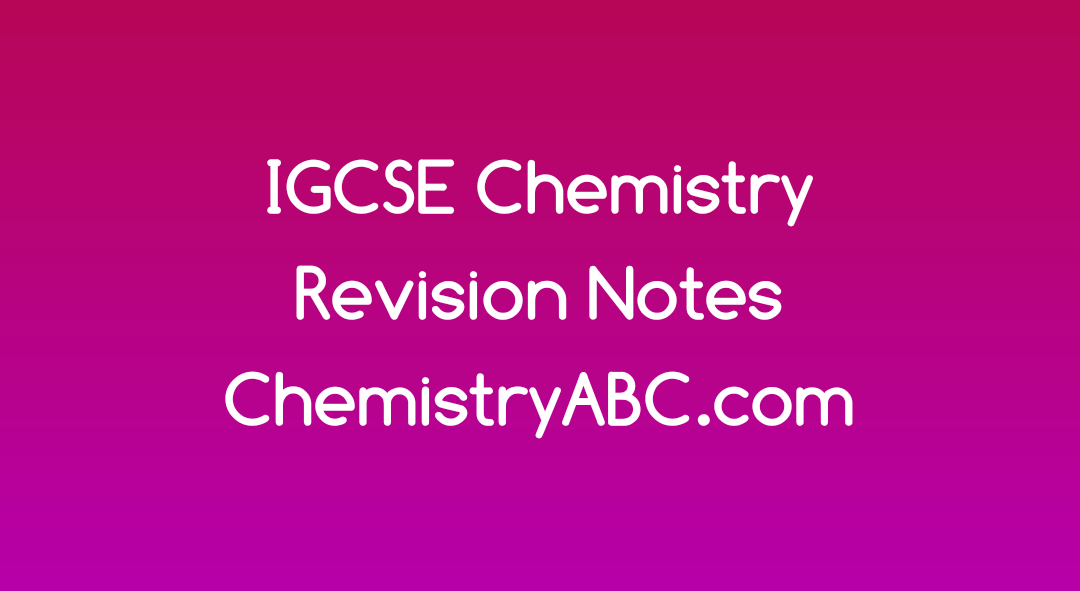Writing Word Equations & Balanced Equations
Step 1: Identify reactants and products and place them in a word equation.
Step 2: Convert the chemical names into chemical formulas. Place them based on the chemical equation and write the state symbols.
Step 3: Balance the chemical equation.
Word equations
- These show the reactants and products of a chemical reaction using their full chemical names
- The arrow (which is spoken as “goes to” or “produces”) implies the conversion of reactants into products
- Reaction conditions or the name of a catalyst can be written above the arrow
Names of compounds
For compounds consisting of 2 atoms:
If one is a metal and the other a nonmetal, then the name of the metal atom comes first and the ending of the second atom is replaced by adding –ide
Eg. NaCl which contains sodium and chlorine thus becomes sodium chloride
If both atoms are nonmetals and one of those is hydrogen, then hydrogen comes first
Eg. hydrogen and chlorine combined is called hydrogen chloride
For other combinations of nonmetals as a general rule, the element that has a lower Group number comes first in the name
Example: carbon and oxygen combine to form CO2 which is carbon dioxide since carbon is in Group 4 and oxygen in Group 6
For compounds that contain certain groups of atoms:
There are common groups of atoms which occur regularly in chemistry
Examples include the carbonate ion(CO32-), sulfate ion (SO42-), hydroxide ion (OH–) and the nitrate ion (NO3–)
When these ions form a compound with a metal atom, the name of the metal comes first
Eg. KOH is potassium hydroxide, CaCO3 is calcium carbonate
Writing and balancing chemical equations
These use the chemical symbols of each reactant and product
When balancing equations, there needs to be the same number of atoms of each element on either side of the equation
The following nonmetals must be written as molecules: H2, N2, O2, F2, Cl2, Br2 and I2
Work across the equation from left to right, checking one element after another
If there is a group of atoms, for example a nitrate group (NO3–) that has not changed from one side to the other, then count the whole group as one entity rather than counting the individual atoms. For example:
NaOH + HCl → NaCl + H2O
There are equal numbers of each atom on either side of the reaction arrow so the equation is balanced
Equations with State Symbols & Deducing Balanced Equations
Using state symbols:State symbols are written after formulae in chemical equations to show which physical state each substance is in:
| SOLID | LIQUID | GAS | AQUOUS |
| (s) | (l) | (g) | (aq.) |
Example 1
Aluminium (s) + Copper (II) Oxide (s) → Aluminium Oxide (s) + Copper (s)
Unbalanced symbol equation:
Al + CuO → Al2O3 + Cu
ALUMINIUM: There is 1 aluminium atom on the left and 2 on the right so if you end up with 2, you must start with 2. To achieve this, it must be 2Al
2Al + CuO → Al2O3 + Cu
OXYGEN: There is 1 oxygen atom on the left and 3 on the right so if you end up with 3, you must start with 3. To achieve this, it must be 3CuO
2Al + 3CuO → Al2O3 + Cu
COPPER: There is 3 copper atoms on the left and 1 on the right. The only way of achieving 3 on the right is to have 3Cu
2Al + 3CuO → Al2O3 + 3Cu
Example 2
Magnesium Oxide (s) + Nitric Acid (aq) → Magnesium Nitrate (aq) + Water (l)
Unbalanced symbol equation:
MgO + HNO3 → Mg(NO3)2 + H2O
MAGNESIUM: There is 1 magnesium atom on the left and 1 on the right so there are equal numbers of magnesium atoms on both sides so these are kept the same
MgO + HNO3 → Mg(NO3)2 + H2O
OXYGEN: There is 1 oxygen atom on the left and 1 on the right so there is an equal number of oxygen atoms on both sides. It is therefore kept the same (remember that you are counting the nitrate group as a separate group, so do not count the oxygen atoms in this group)
MgO + HNO3 → Mg(NO3)2 + H2O
HYDROGEN: There is 1 hydrogen atom on the left and 2 on the right. Therefore you must change HNO3 to 2HNO3
MgO + 2HNO3 → Mg(NO3)2 + H2O
Balancing ionic equations
- In aqueous solutions ionic compounds dissociate into their ions, meaning they separate into the component atoms or ions that formed them
- g. hydrochloric acid and potassium hydroxide dissociate as follows:
- HCl →H+ + Cl–
- KOH → K+ + OH–
- It is important that you can recognise common ionic compounds and their constituent ions
- These include:
- Acids such as HCl and H2SO4
- Group I and Group II hydroxides e.g. sodium hydroxide
- Soluble salts e.g. potassium sulfate, sodium chloride
- Follow the example below to write ionic equations
Example
Write the ionic equation for the reaction of aqueous chlorine and aqueous potassium iodide.
Step 1: Write out the full balanced the equation:
2KI(aq) + Cl2(aq) → 2KCl(aq) + I2(aq)
Step 2: Identify the ionic substances and write down the ions separately:
2K+ (aq) + 2I–(aq) + Cl2(aq) → 2K+(aq) + 2Cl–(aq) + I2(aq)
Step 3: Rewrite the equation eliminating the ions which appear on both sides of the equation (spectator ions ) which in this case are the K+ ions:
2I–(aq) + Cl2(aq) → 2Cl–(aq) + I2(aq)
Coming soon ….
June 2016 MS – Paper 1 Edexcel & CIE Chemistry AS-level
June 2016 QP – Paper 1 Edexcel & CIE Chemistry AS-level
June 2017 MS – Paper 1 Edexcel & CIE Chemistry AS-level
June 2017 QP – Paper 1 Edexcel & CIE Chemistry AS-level
June 2018 MS – Paper 1 Edexcel & CIE Chemistry AS-Level
June 2018 QP – Paper 1 Edexcel & CIE Chemistry AS-Level
June 2019 MS – Paper 1 Edexcel & CIE Chemistry AS-level
June 2019 QP – Paper 1 Edexcel & CIE Chemistry AS-level
June 2020 MS – Paper 1 Edexcel & CIE Chemistry AS-level
June 2020 QP – Paper 1 Edexcel & CIE Chemistry AS-level



